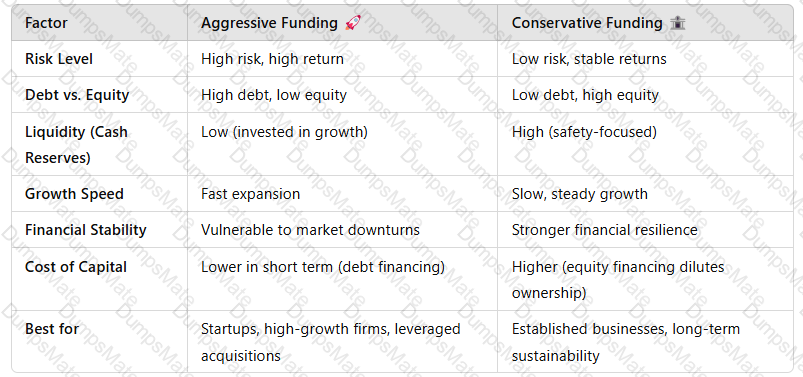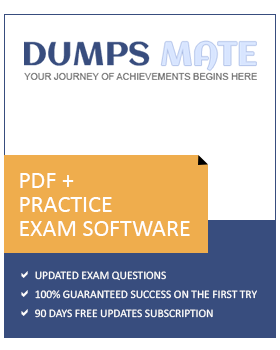Comparison of Aggressive vs. Conservative Business Funding Approaches
Introduction
Businesses adopt differentfunding strategiesbased on theirrisk tolerance, growth objectives, and financial stability. Two contrasting approaches to business funding are:
Aggressive Funding Approach– Focuses onhigh-risk, high-reward strategieswithmore debt and short-term financingto fuel rapid expansion.
Conservative Funding Approach– Emphasizesfinancial stability, risk aversion, and long-term security, often relying onequity and retained earningsto fund operations.
Each approach has advantages and risks, influencing a company’sliquidity, cost of capital, and financial sustainability.
1. Aggressive Business Funding Approach????(High Risk, High Reward)
Definition
Anaggressive funding strategyinvolves maximizingshort-term debt, high leverage, and minimal cash reservestoaccelerate growth and expansion.
✅Key Characteristics:
Relies heavily on debt financing(bank loans, corporate bonds, short-term credit).
Prioritizes rapid growth and high returnsover financial security.
Uses minimal equity financingto avoid ownership dilution.
Maintains low cash reserves, assuming cash flows will cover liabilities.
????Example:
Startups and tech firms (e.g., Tesla, Uber, Amazon in early years)oftenborrow aggressivelyto scale rapidly.
Private equity firmsfund acquisitions using high leverage to maximize returns.
Advantages of Aggressive Funding
✔Faster business expansion– Capital is readily available for investments.✔Higher return potential– More funds are allocated to revenue-generating activities.✔Lower equity dilution– Existing shareholders maintain control as funding is primarily debt-based.
Disadvantages of Aggressive Funding
❌High financial risk– Heavy debt increases vulnerability to economic downturns.❌Liquidity problems– Low cash reserves can cause issues during slow revenue periods.❌Higher borrowing costs– Lenders charge higher interest due to the risk involved.
????Best for:Fast-growing companies, high-risk industries, and businesses with predictable cash flows.
2. Conservative Business Funding Approach????(Low Risk, Long-Term Stability)
Definition
Aconservative funding strategyfocuses onlow debt levels, high liquidity, and long-term financingto ensurefinancial stability and steady growth.
✅Key Characteristics:
Uses retained earnings and equity financingover debt.
Minimizes reliance on short-term creditto avoid financial pressure.
Maintains high cash reservesfor financial security.
Focuses on steady, sustainable growthrather than rapid expansion.
????Example:
Berkshire Hathaway (Warren Buffett’s company)follows aconservative funding model, relying on retained earnings rather than excessive debt.
Family-owned businessesoften prioritize financial stability over rapid expansion.
Advantages of Conservative Funding
✔Lower financial risk– Reduces dependence on external creditors.✔Stable cash flow– Ensures business continuity during economic downturns.✔Better credit rating– Stronger financial health allows for lower borrowing costs if needed.
Disadvantages of Conservative Funding
❌Slower business growth– Limited access to capital can restrict expansion.❌Missed market opportunities– Competitors with aggressive funding may outpace the company.❌Higher cost of capital– Equity financing (selling shares) dilutes ownership and reduces profit per share.
????Best for:Established businesses, risk-averse industries, and companies focusing on long-term sustainability.
3. Comparison Table: Aggressive vs. Conservative Funding Approaches
 A screenshot of a computer screen
Description automatically generated
A screenshot of a computer screen
Description automatically generated
Key Takeaway:The best funding approach depends onindustry, company stage, and risk appetite.
4. Which Approach Should a Business Use?
✅Aggressive Approach is Ideal For:
Startups & High-Growth Companies– Needfast capitalto capture market share.
Businesses in Competitive Markets– Companies that mustoutpace rivals through aggressive expansion.
Private Equity & Leveraged Buyouts– Maximizing returns throughhigh debt strategies.
✅Conservative Approach is Ideal For:
Mature & Stable Businesses– Companies prioritizingsteady revenue and financial security.
Family-Owned Enterprises– Owners preferlow debt and long-term growth.
Risk-Averse Industries– Businesses inessential goods/services sectorswherestability is more important than rapid expansion.
Hybrid Approach: The Best of Both Worlds?
????Many businesses use a combination of both approaches, leveragingdebt for growth while maintaining financial stabilitythrough retained earnings and equity.
????Example:
Appleused a conservative strategy in its early years but adoptedaggressive funding for global expansionpost-2010.
5. Conclusion
The choice betweenaggressive and conservative fundingdepends on a company’sgrowth goals, financial risk tolerance, and industry conditions.
✅Aggressive funding maximizes short-term growthbut increases financial risk.✅Conservative funding ensures stabilitybut limits expansion speed.✅Most companies use a hybrid modelto balancegrowth and financial security.
Understanding these approaches helps businessesoptimize capital structure, manage risk, and align financing with strategic objectives.





 A screenshot of a computer screen
Description automatically generated
A screenshot of a computer screen
Description automatically generated

